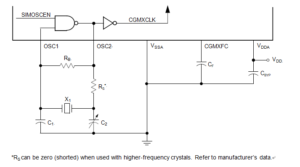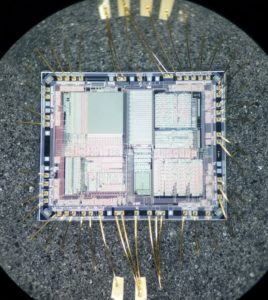Unlock MC68HC11K4 Microcontroller Eeprom Memory
In its typical configuration, the CGM requires seven external components. Five of these are for the crystal oscillator and two are for the PLL and it will faciliate the process of Unlock MC68HC11K4 Microcontroller Eeprom Memory:
The crystal oscillator is normally connected in a Pierce oscillator configuration, as shown in below Figure.
This figure shows only the logical representation of the internal components and may not represent actual circuitry. The oscillator configuration uses five components:
- Crystal, X1
- Fixed capacitor, C1
- Tuning capacitor, C2 (can also be a fixed capacitor)
- Feedback resistor, RB
- Series resistor, RS (optional)
The series resistor (RS) is included in the diagram to follow strict Pierce oscillator guidelines and may not be required for all ranges of operation in the process of executing Crack Microcontroller MC68HC08AZ60 Eeprom Memory, especially with high frequency crystals. Refer to the crystal manufacturer’s data for more information.
The CGMXFC pin is required by the loop filter to filter out phase corrections. A small external capacitor is connected to this pin. To prevent noise problems, CF should be placed as close to the CGMXFC pin as possible, with minimum routing distances and no routing of other signals across the CF connection.
VDDA is a power pin used by the analog portions of the PLL. The pin should be connected to the same voltage potential as the VDD pin. Route VDDA carefully for maximum noise immunity and place bypass capacitors as close as possible to the package only after Crack Motorola MC68HC08GP16 Locked Memory.
The SIMOSCEN signal comes from the system integration module (SIM) and enables the oscillator and PLL.
CGMXCLK is the crystal oscillator output signal. It runs at the full speed of the crystal (fXCLK) and is generated directly from the crystal oscillator circuit when MCU Recovering. The duty cycle of CGMXCLK is unknown and may depend on the crystal and other external factors. Also, the frequency and amplitude of CGMXCLK can be unstable at start-up.



